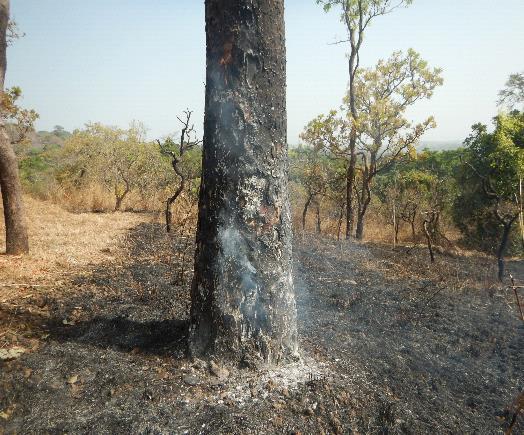
1 minute read
3/4 of the plot is reached by fire
Open Access
International Journal of Forest, Animal and Fisheries Research (IJFAF) [Vol-4, Issue-6, Nov-Dec, 2020] ISSN: 2456-8791 https://dx.doi.org/10.22161/ijfaf.4.6.1
Advertisement
if the debarking and / or the hollow is on the underside of the trunk and branchinclined. A tree is considered tilted if it leans more than 30 ° from the vertical. According to studies by Perry and al., (1985), Gibbons and Lindenmayer (1997), Whitford (2002), Whitford and Williams (2002) and as observed by N'driand al., (2011), these parts bark could constitute entry points for termites in trees to damage them and also surfaces likely to burn easily during the next fires because they are not protected by bark. According to the scenario proposed by N'driand al., (2011), the external hollows observed on the trees would begin with the debarking which would allow the termites to enter the trunk of the trees to settle there. Once the tree is hollowed out by these termites, the fire exposes the internal hollows, which weakens the mechanical resistance of the trees (N'dri, 2011).
A B

C

Legend: A = Different stages of fire damage. B = debarkingfollowingseveralfires C = debarking of the year
2.4 Statistical analyzes
The analysis of the data was carried out with Excel software version 2013 for the calculations and the confection of graphs and the software R (http://www.rproject.org/) for the tests of Student and simple ANOVA or multiple. (Significance threshold <0.05; Significant. Codes: 0 ‘***’ 0.001 ‘**’ 0.01 ‘*’ 0.05 ‘.’ 0.1 ‘’ 1). The linear model (lm) was used to analyze the intensity of the fire as a function of its regime (early and late). The generalized linear model made it possible to analyze the frequency of debarked trees according to different species and stages of development. The georeferencing maps of the experimental plots were produced in ArcGIS 10.1 under the WGS84 UTM Z33N projection.




